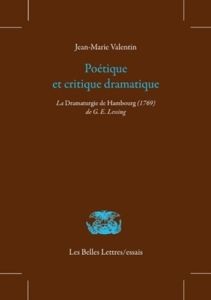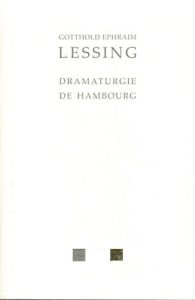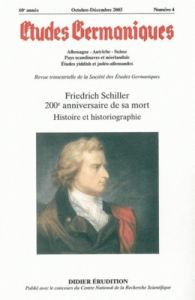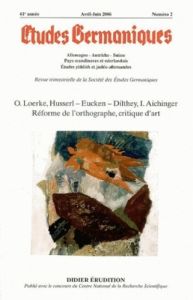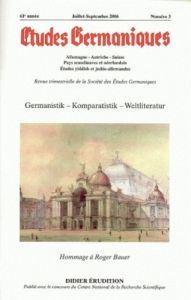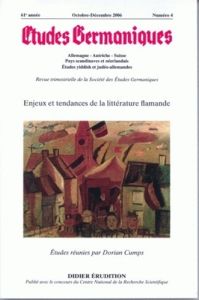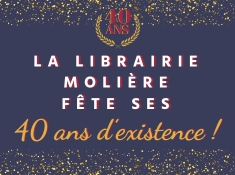Etudes Germaniques N° 268, 4/2012 : Erec/Erec, humanisme et savoirs, Paris/Weimar
Christophe THIERRY, Puissance et Sagesse dans Erec de Hartmann von Aue et Erec et Enide de Chrétien de Troyes - des références au De gratia de Bernard de Clairvaux ?? Did Chretien de Troyes draw his inspiration from the treatise De gratia et libero arbitrio by Bernard of Clairvaux as he conceived his first Arthurian novel, Erec et Enide ?? The hypothesis set up in this article mainly builds upon the fact that some narrative patterns which are instrumental in the novel such as the gift of the horse as well as the guiding, teaching and healing functions assumed by certain characters could derive directly from the prologue of the De gratia. On the whole, the way Hartmann deals with these patterns seems to indicate that he knew where they came from. As far as the second part of the action is concerned (from the departure from Carnant after the recreantise episode until the epilogue) we suggest a three-part structure that differs from Kuhn's. Not only is this structure reminiscent of that of Bernard's treatise but it is also brilliantly emphasized by Hartmann's rewriting of Chretien's text. In order to uphold this thesis we first have to underline the significance of the character of Guivreiz/Guivret on the hero's journey as well as the symbolic dimension of hunting in the whole work. Hat sich Chrétien de Troyes bei der Ausarbeitung seines ersten Artusromans Erec et Enide vom Traktat De gratia et libero arbitrio Bernhards von Clairvaux inspirieren lassen ?? Die hier vertretene Hypothese stützt sich vor allem darauf, dass Erzählmotive, die für den ganzen Erecroman handlungskonstitutiv sind (Pferdegeschenk, Führer-, Lehrer- und Arztfunktion bestimmter Gestalten), aus dem Prolog des Traktats stammen könnten. Generell deutet Hartmanns spielerischer Umgang mit diesen Motiven darauf hin, dass er über ihre Herkunft informiert war. Für den zweiten Teil der Handlung (von dem Aufbruch nach der recreantise-Episode bis zum Epilog) wird - in bewusster Abkehr von Kuhns Gliederungsvorschlag -?eine dreigliedrige Struktur postuliert, die nicht nur an den Aufbau von Bernhards Traktat erinnert, sondern auch durch Hartmanns Technik der Adaptation brilliant hervorgehoben wird. Zur Untermauerung dieser These muss im Vorfeld die Bedeutung der Gestalt des Guivret/Guivreiz in der Aventiurefahrt der Protagonisten sowie die der Jagdsymbolik im ganzen Werk herausgestellt werden. Jean-Marie VALENTIN, Humanisme et savoirs du corps en Alsace au XVIe siècle. Médecine, chirurgie, pharmacopée Humanism is too often equated, even today, exclusively with ancient languages, literatures and philosophy. But from the point of view of cultural history, the enormous interest which that epoch showed in the human body and the knowledge linked with it was no less important. The present article takes as its starting point the works printed in Strasburg from 1497 to 1570 by some very active pharmaceutical dispensaries (U. Chrisman has drawn up a statistical summary). Although the free imperial city did not dispose at that time of a real university, it distinguished itself by the production of technically remarkable treatises in the fields of medicine, surgery and pharmacy. The high frequency of works oriented towards the needs of potential purchasers is testimony to the care taken by authors and editors to address all classes of society, including those citizens who could not read. Attention is paid in particular to the numerous 'domestic pharmacies' which targeted especially women. The conscious recourse to German, the dignity of which is constantly defended, as well as the stress invariably put on the need to speak to all members of the urban community, should also be given prominence. Both reinforce the thesis defended here regarding a commitment which privileges a collective ideal that promotes stability. Allzu oft wird heute noch der Humanismus mit der ausschließlichen Pflege der antiken Sprachen, Literaturen und Philosophie gleichgestellt. Nicht minder wichtig ist kulturhistorisch aber das enorme Interesse, das diese Zeit dem menschlichen Körper und dem damit verbundenen Wissen entgegenbrachte. Ausgangspunkt dieses Aufsatzes sind die von M. U. Chrisman statistisch erfaßten Bücher, die von 1497 bis 1570 in Straßburg von sehr aktiven Offizinen gedruckt wurden. Obwohl die reichsunmittelbare Freie Stadt lange über keine richtige Universität verfügte, hat sie sich im Bereich der Medizin, der Chirurgie und der Arzneikunst durch die Produktion zahlreicher, technisch hervorragend ausgestatteter Traktate hervorgetan. Die hohe Frequenz der nach den konkreten Bedürfnissen der potentiellen Käufer ausgerichteten Bücher zeugt vom Willen der Autoren und Verleger, sich an alle sozialen Stände (einschließlich der illiterati) zu wenden. Hervorzukehren sind in der Hinsicht die vielen "Hausapotecken", deren spezielles Zielpublikum die Frauen waren. Der bewußte Rekurs auf das Deutsche, dessen "Würde" damals unablässig in Schutz genommen wird, sowie die ständige Betonung der christlich fundierten Sorge für alle Mitglieder der menschlichen Stadtgemeinschaft sollen ebenfalls in den Vordergrund gerückt werden. Beide untermauern nämlich die hier verfochtene These eines dezidierten Engagements zugunsten eines gesamtgesellschaftlichen, stabilisierend wirkenden Ideals. Patrick Difour, "?uns von beiden Extremis des Mitleids zu reinigen ?" . Zu Goethes wirkungsästhetischem Interesse im Vorspruch zu Die Leiden des jungen Werthers The place that The Sorrows of Young Werther holds in the history of German literature is partly due to its supposed social repercussions ("Werther Fever"). The article is focusing on the short preface of this epistolary novel in which the fictional publisher expresses two intended effects sometimes considered incompatible. It also brings to light the genesis of the paratext, along with a temporary addition to the 1775 edition, and links it to the debate on the relationship between literature and its audiences at the age of Enlightenment. La place qu'occupent Les Souffrances du jeune Werther dans l'histoire de la littérature allemande est entre autres due aux répercussions sociales qui lui ont été attribuées ("?fièvre de Werther ?"). L'article se propose d'étudier la courte préface du roman épistolaire où l'ambition de l'éditeur fictif consiste à combiner deux intentions parfois perçues comme contradictoires. Deux éclairages complémentaires précisent, d'une part, la genèse dudit paratexte ainsi qu'un ajout temporaire de 1775, et, d'autre part, le contexte théorique contemporain du débat portant sur la question du rapport que la littérature entretient avec son public. Boris Roman Gibhardt, Von der Gelehrtenrepublik zur Weltkultur Goethe und die Achse Paris - Weimar um 1800 The exchange between Germany and France has often been exemplified with the interactions of the two important cities, Paris and Berlin. But another city, classical Weimar, apolitical but time-conscious refuge in these times after Thermidor II, plays a certain role : All new urban culture of taste, very present in the provinces due to the opening of the markets, is put to test in a critical and intellectual way : Will cultural exchange stimulate the ambitious concept of "aesthetic education" (Friedrich Schiller) or will it, because of its new liberalism, imperil the heritage of the République des Lettres ? While the global phenomenon of cultural exchange seems to escape the Weimar Intellectuals-Goethe, Schiller, W. v. Humboldt-they launch a kind of Weimar-Paris axis, encouraged by Madame de Staël upon others, for establishing, against different conceptions of "circulation d'idées", the "commerce intellectual" of a "Weltcultur" and "Weltliteratur" that would be aware of the specific challenge of urban modernity and supranational transferred knowledge. L'échange franco-allemand a été étudié à l'aune, pour l'essentiel, des deux capitales, Paris et Berlin. Cependant, c'est à Weimar - refuge volontairement apolitique mais conscient des péripéties du temps - que la nouvelle culture urbaine après Thermidor, de plus en plus présente dans les provinces grâce à l'ouverture des marchés, donne le jour à une réflexion critique abondante. L'échange culturel, pourra-t-il encourager le concept très ambitieux d'une "?éducation esthétique ?" (Friedrich Schiller) ou sera-t-il, en raison de son nouveau libéralisme, un danger pour l'héritage de la République des Lettres ?? Alors que l'échange culturel, en tant que phénomène global, risque de leur échapper, les classiques de Weimar - Goethe, Schiller, W. ?v. ?Humboldt - entreprennent de lancer un véritable "?axe ?" Weimar-Paris, soutenu, entre autres, par Madame de Staël pour établir, en nette opposition avec d'autres conceptions de la "?circulation d'idées ?" , un nouveau "?commerce intellectuel" à la hauteur d'une "?Weltcultur ?" qui serait consciente du défi de la modernité urbaine.
22,00 €
Disponible sur commande
EAN
9782252038598
Caractéristiques
| EAN | 9782252038598 |
|---|---|
| Titre | Etudes Germaniques N° 268, 4/2012 : Erec/Erec, humanisme et savoirs, Paris/Weimar |
| Auteur | VALENTIN JEAN-MARIE |
| Editeur | KLINCKSIECK |
| Largeur | 150mm |
| Poids | 245gr |
| Date de parution | 16/03/2013 |
| Nombre de pages | 714 |
| Emprunter ce livre | Vente uniquement |



